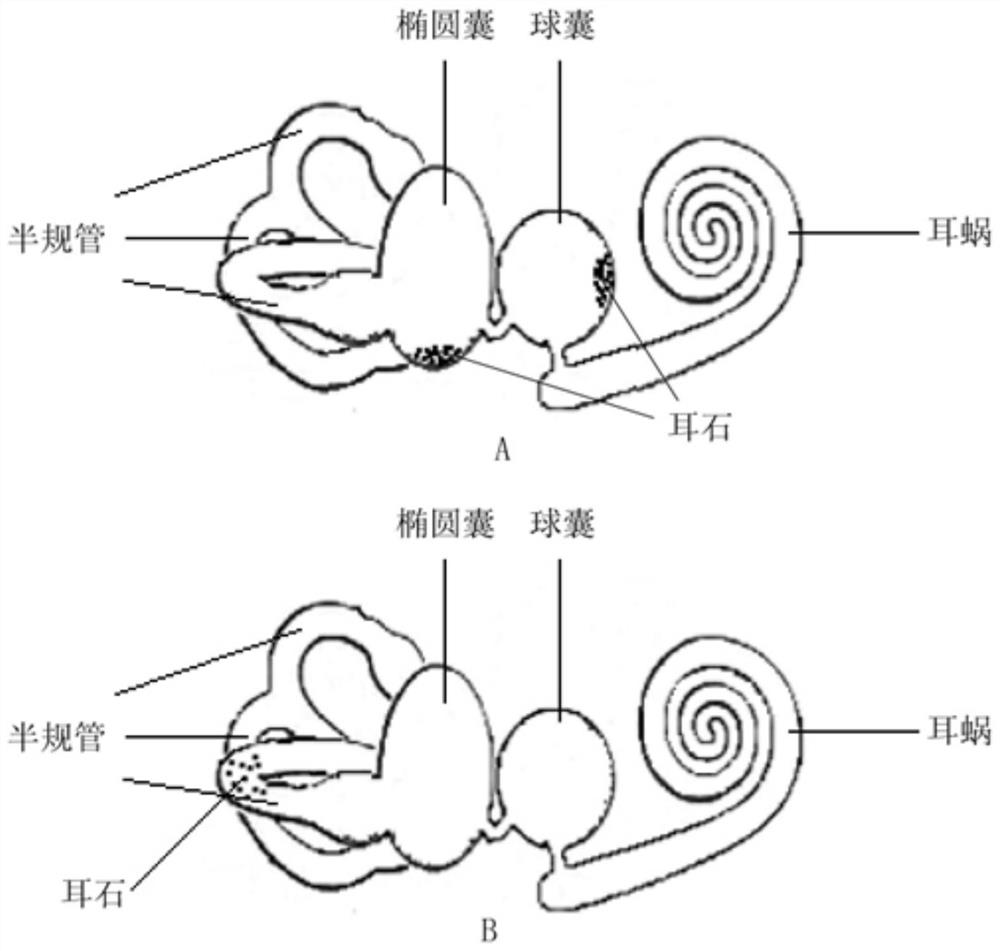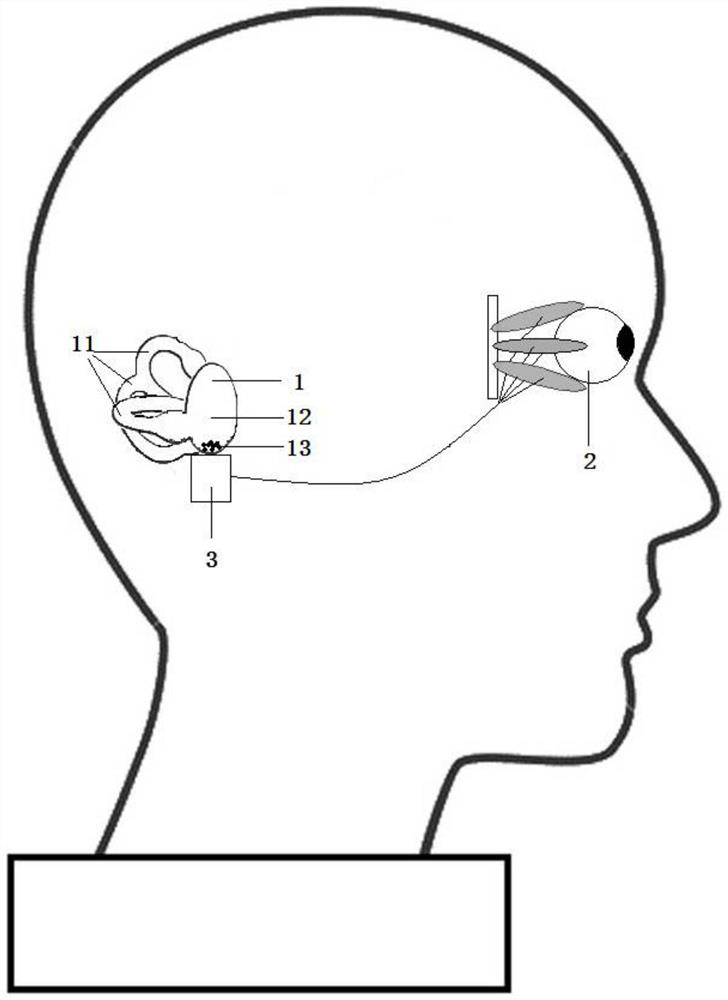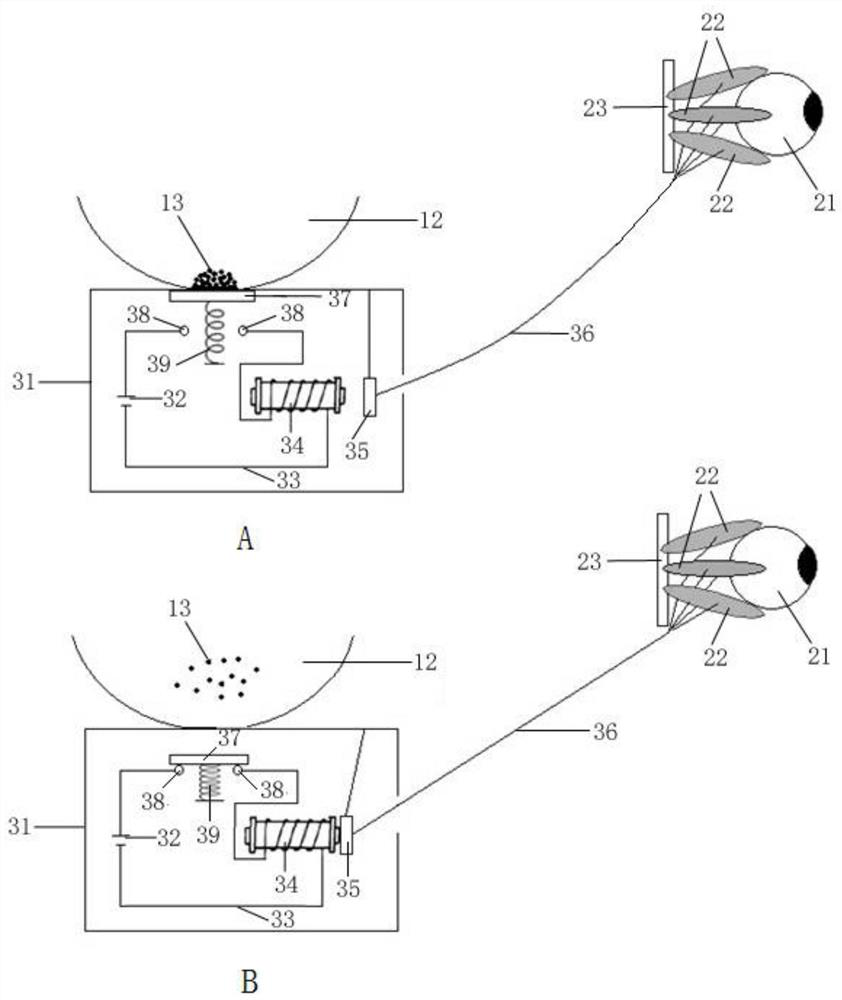Inner ear balancer demonstration teaching aid
A technology of a balancer and a teaching aid, which is applied in the field of medical teaching aids, can solve the problems of limited guidance of the reduction technique and the inability to see the movement trajectory of the patient's otolith reduction, and achieves the effects of strong clinical guidance, simple structure and clever conception.
- Summary
- Abstract
- Description
- Claims
- Application Information
AI Technical Summary
Problems solved by technology
Method used
Image
Examples
Embodiment 1
[0051] A demonstration teaching aid for an inner ear balancer, such as figure 2 and 3 As shown, including the inner ear model 1 and the eyeball model 2, the two are fixed on the bracket according to the anatomical position relationship of the human body;
[0052] The inner ear model 1 simulates the structure of the human inner ear, including the semicircular bone canal 11 and the utricle 12. The semicircular bone canal is made of transparent material and forms a closed cavity with the utricle, which is filled with liquid simulating human lymph, and placed in the utricle Simulated otolith particles made of magnets13;
[0053] The eyeball model 2 includes a simulated eyeball 21, a simulated extraocular muscle 22 and a support structure 23, the simulated eyeball 21 is fixedly connected to one end of the elastic simulated extraocular muscle 22, and the other end of the simulated extraocular muscle 22 is fixedly connected to the support structure 23 , the simulated extraocular m...
Embodiment 2
[0059] Embodiment 2 On the basis of the structure of Embodiment 1, the control mechanism 39 is changed from a spring to a limit groove, such as Figure 4-5 As shown, the limiting groove 39 is fixedly connected in the housing, and the conducting member 37 can slide freely in the limiting groove 39 along the direction of gravity. When the conducting member and the simulated otolith particles are attracted by magnetic force, the conducting member is separated from the on-off The contact of the contact element interrupts the circuit; when the magnetic attraction between the conductive element and the simulated otolith particles weakens or disappears, the conductive element returns to the first state of being in contact with the on-off contact element due to gravity traction, and the circuit is turned on;
Embodiment 3
[0061] Embodiment 3 On the structural basis of Embodiment 1, the control mechanism 39 is changed into a toggle member by a spring, such as Figure 6-9 As shown, the toggle member 39 includes a toggle switch 391, a toggle block 392, and a toggle groove 393. The housing of the electromagnetic tractor is provided with an opening 311 that can accommodate the toggle switch, and the toggle groove is fixedly connected in the housing. , the toggle switch protrudes from the opening 311, the toggle switch 391, the toggle block 392 and the conductive member 37 are fixedly connected in sequence, the toggle block 392 is engaged in the toggle groove 393, and can slide in the toggle groove, the toggle switch The shifting block can be driven in the opening to drive the conduction member to move, so that the conduction member has the first state of being in contact with the on-off contact element and conducting the circuit, and magnetically attracts the simulated otolith particles and interacts...
PUM
 Login to View More
Login to View More Abstract
Description
Claims
Application Information
 Login to View More
Login to View More - R&D
- Intellectual Property
- Life Sciences
- Materials
- Tech Scout
- Unparalleled Data Quality
- Higher Quality Content
- 60% Fewer Hallucinations
Browse by: Latest US Patents, China's latest patents, Technical Efficacy Thesaurus, Application Domain, Technology Topic, Popular Technical Reports.
© 2025 PatSnap. All rights reserved.Legal|Privacy policy|Modern Slavery Act Transparency Statement|Sitemap|About US| Contact US: help@patsnap.com



